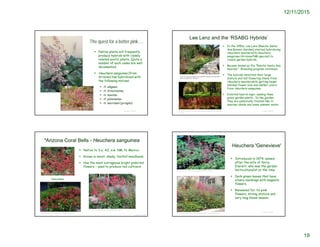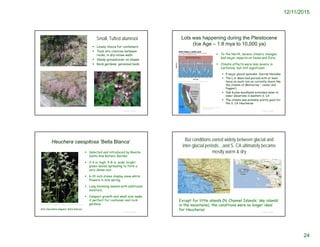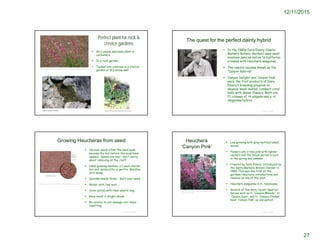This document provides information about native California plant species in the genus Heuchera, commonly called Coral Bells or Alumroots. It discusses the taxonomy and phylogeny of Heuchera, which was recently realigned based on DNA and morphological analysis. Thirteen native California species of Heuchera are described, including Roundleaf Alumroot (Heuchera cylindrica), which is found in northern California. Details are provided on the appearance, habitat, cultivation needs and uses of H. cylindrica.

































